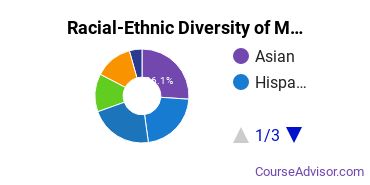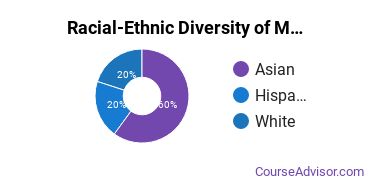Multi / Interdisciplinary Studies at New York Institute of Technology
NYIT is located in Old Westbury, New York and has a total student population of 6,851.
Want to know more about the career opportunities in this field? Check out the Careers in Multi / Interdisciplinary Studies section at the bottom of this page.
NYIT Multi / Interdisciplinary Studies Degrees Available
- Bachelor’s Degree in Multi / Interdisciplinary Studies
- Master’s Degree in Multi / Interdisciplinary Studies
NYIT Multi / Interdisciplinary Studies Rankings
The multi / interdisciplinary studies major at NYIT is not ranked on College Factual’s Best Colleges and Universities for Multi / Interdisciplinary Studies. This could be for a number of reasons, such as not having enough data on the major or school to make an accurate assessment of its quality.
Multi / Interdisciplinary Studies Student Demographics at NYIT
Take a look at the following statistics related to the make-up of the multi / interdisciplinary studies majors at New York Institute of Technology.
NYIT Multi / Interdisciplinary Studies Bachelor’s Program

Prospective students may be interested in knowing that this school graduates 3% more racial-ethnic minorities in its multi / interdisciplinary studies bachelor's program than the national average.*
The following table and chart show the race/ethnicity for students who recently graduated from New York Institute of Technology with a bachelor's in multi / interdisciplinary studies.

| Race/Ethnicity | Number of Students |
|---|---|
| Asian | 1 |
| Black or African American | 2 |
| Hispanic or Latino | 3 |
| White | 3 |
| International Students | 4 |
| Other Races/Ethnicities | 2 |
NYIT Multi / Interdisciplinary Studies Master’s Program

The following table and chart show the race/ethnicity for students who recently graduated from New York Institute of Technology with a master's in multi / interdisciplinary studies.

| Race/Ethnicity | Number of Students |
|---|---|
| Asian | 1 |
| Black or African American | 1 |
| Hispanic or Latino | 1 |
| White | 4 |
| International Students | 0 |
| Other Races/Ethnicities | 1 |
Concentrations Within Multi / Interdisciplinary Studies
If you plan to be a multi / interdisciplinary studies major, you may want to focus your studies on one of the following concentrations. The table shows all degrees awarded in this field awarded for all degree levels at New York Institute of Technology. A concentration may not be available for your level.
| Concentration | Annual Degrees Awarded |
|---|---|
| Other Multi/Interdisciplinary Studies | 23 |
| Nutrition Science | 5 |
Related Majors
Careers That Multi / Interdisciplinary Studies Grads May Go Into
A degree in multi / interdisciplinary studies can lead to the following careers. Since job numbers and average salaries can vary by geographic location, we have only included the numbers for NY, the home state for New York Institute of Technology.
| Occupation | Jobs in NY | Average Salary in NY |
|---|---|---|
| Accountants and Auditors | 110,780 | $96,300 |
| Community and Social Service Specialists | 15,510 | $56,110 |
| Medical Scientists | 9,500 | $95,170 |
| Labor Relations Specialists | 7,890 | $85,870 |
| Professors | 6,440 | $112,000 |
References
*The racial-ethnic minorities count is calculated by taking the total number of students and subtracting white students, international students, and students whose race/ethnicity was unknown. This number is then divided by the total number of students at the school to obtain the racial-ethnic minorities percentage.
- College Factual
- National Center for Education Statistics
- O*NET Online
- Image Credit: By Leginius The Angry under License
More about our data sources and methodologies.
